Cigna earnings beat by $0.04, revenue topped estimates
Mogo Inc (NASDAQ:MOGO) presented its Q1 2025 earnings on May 8, highlighting its strategic pivot to AI-native finance and continued growth in key business segments. The fintech company reported modest overall revenue growth while emphasizing its "Mogo 3.0" initiative, which aims to transform its operations through comprehensive AI integration.
Quarterly Performance Highlights
Mogo reported total adjusted revenue of $16.7 million for Q1 2025, representing a 2% year-over-year increase. While this overall growth was modest, the company saw significant expansion in its wealth and payments segments, which grew by 41% and 34% respectively. Adjusted EBITDA reached $1.1 million, representing a 6.1% margin.
As shown in the following quarterly highlights:

The company’s payments volume reached $3.2 billion, growing 26% year-over-year, while Assets Under Management (AUM) grew to approximately $436 million, an 8% increase from the previous year. Mogo maintained a strong balance sheet with approximately $39 million in cash and investments.
Cash flow metrics showed notable improvement, with quarterly cash flow before investment in loan book increasing from $1.8 million in Q1 2024 to $3.8 million in Q1 2025. More significantly, cash flow from operations improved from -$3.9 million to $0.6 million over the same period, marking the 10th consecutive quarter of positive operational cash flow.
The following chart illustrates this cash flow improvement:
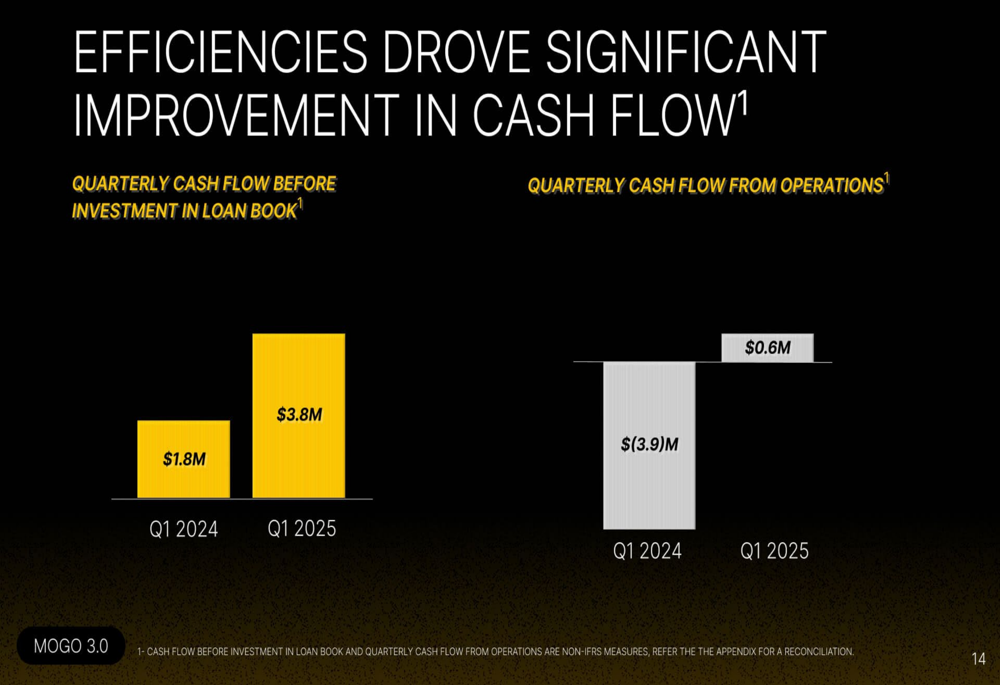
Strategic Initiatives: Mogo 3.0 and AI Integration
The centerpiece of Mogo’s presentation was the introduction of "Mogo 3.0," described as a new era of "AI-native finance." The company outlined a comprehensive three-phase AI transformation roadmap extending through 2026, with the goal of embedding AI across all aspects of its operations and customer experience.
Mogo’s AI transformation roadmap shows a methodical approach to integrating artificial intelligence:
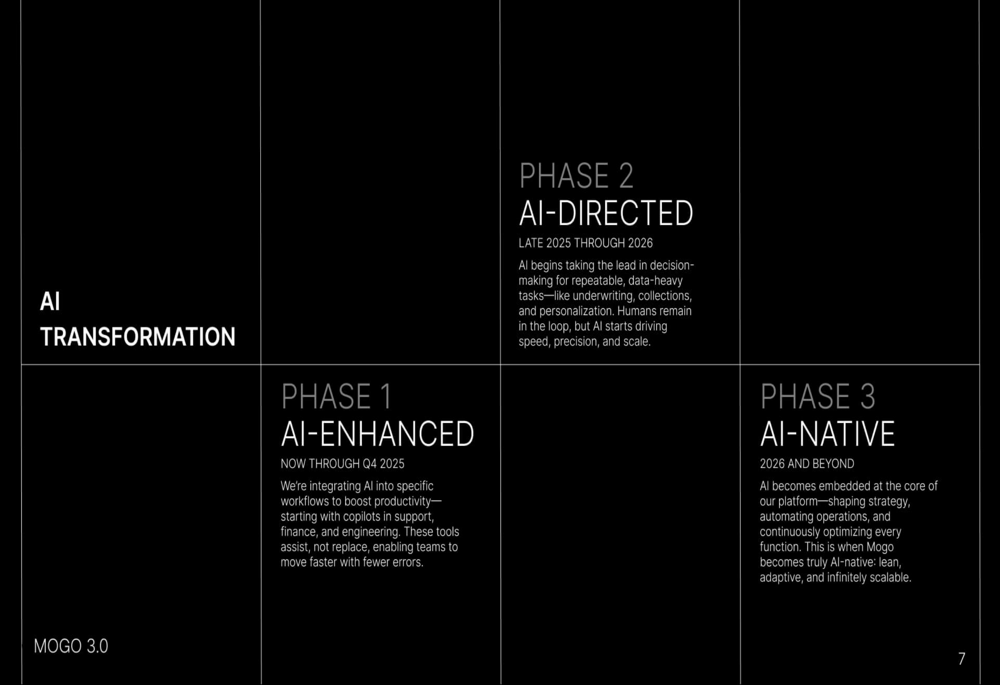
The company is currently in Phase 1 (AI-Enhanced), focusing on integrating AI into specific workflows to boost productivity. This includes implementing AI copilots in support, finance, and engineering functions. Phase 2 (AI-Directed) is expected to begin in late 2025, where AI will take the lead in decision-making for repeatable, data-heavy tasks. By 2026, Mogo aims to reach Phase 3 (AI-Native), where AI becomes embedded at the core of the platform.
The company demonstrated how AI is already transforming its user experience through before-and-after comparisons of its borrowing and investing interfaces:
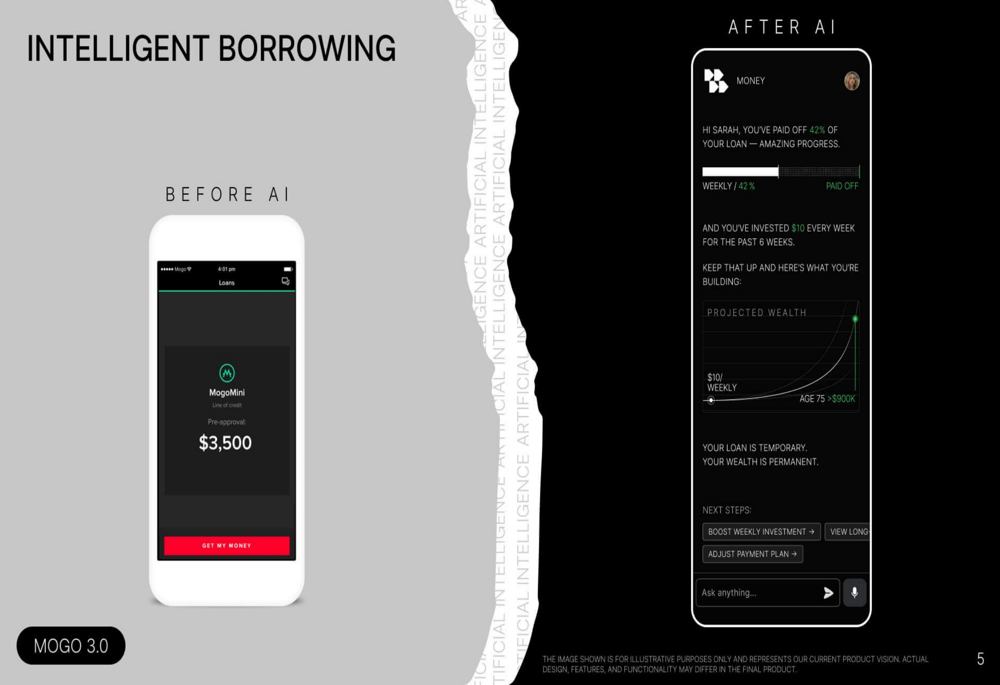
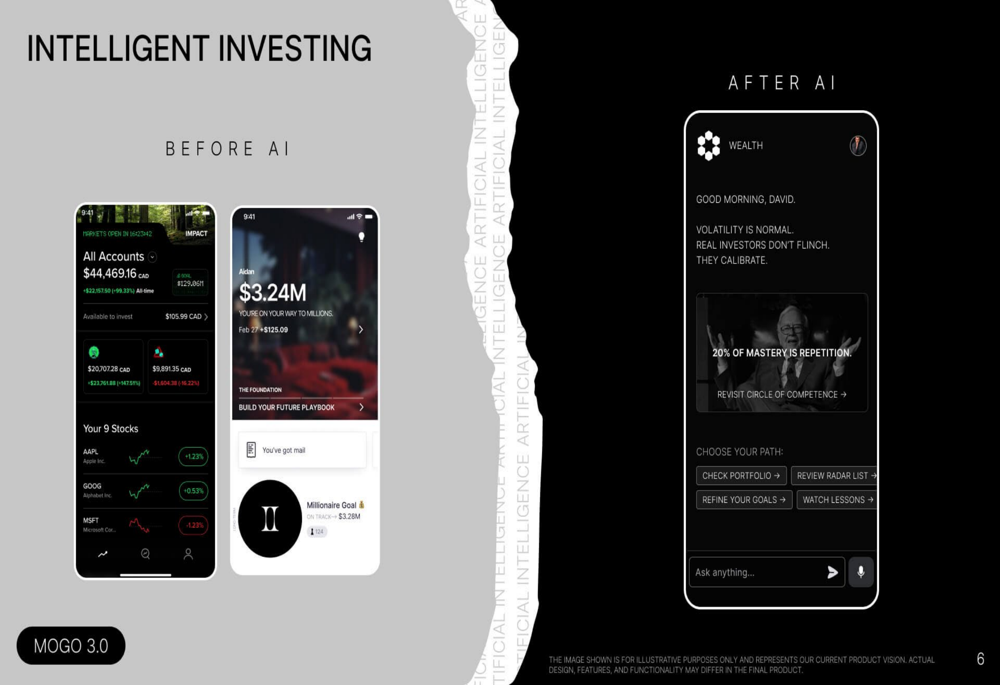
These interface improvements show a shift from basic transactional screens to personalized, insight-driven experiences that provide users with contextual financial guidance and recommendations.
Detailed Financial Analysis
Mogo’s financial performance showed strength in specific segments despite modest overall growth. The wealth and payments divisions emerged as key growth drivers, offsetting declines in other areas.
The following chart breaks down Mogo’s revenue growth by segment:
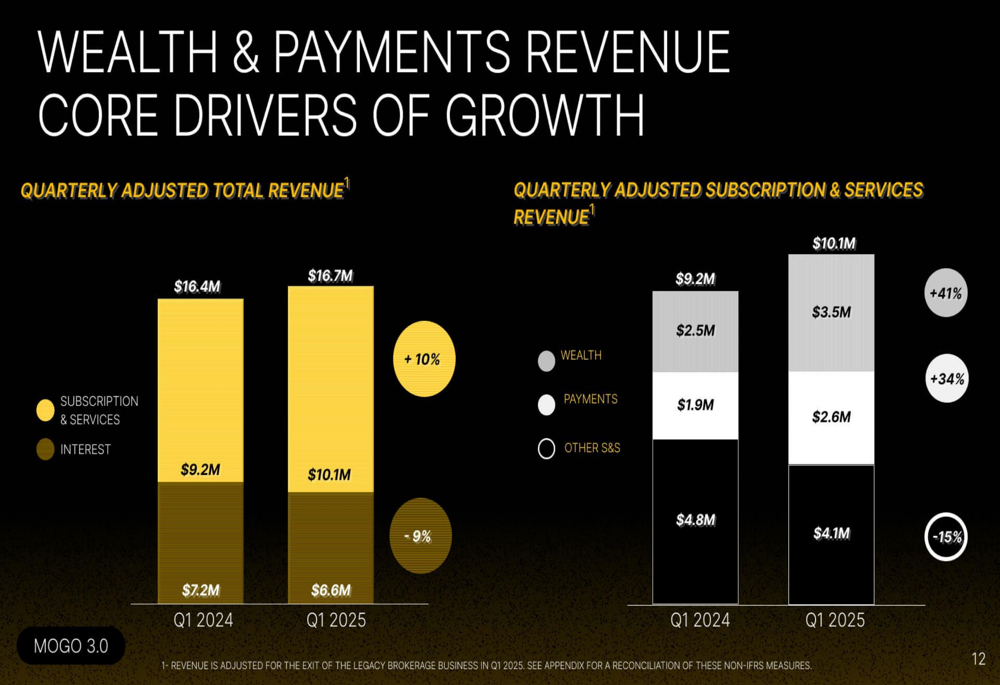
While wealth revenue increased from $2.5 million to $3.5 million (+41%) and payments revenue grew from $1.9 million to $2.6 million (+34%), other subscription and services revenue decreased from $4.8 million to $4.1 million (-15%). This shift reflects Mogo’s strategic focus on higher-growth segments.
The company’s balance sheet remained strong, with a total of $38.8 million in marketable securities, cash, and investments as of Q1 2025:
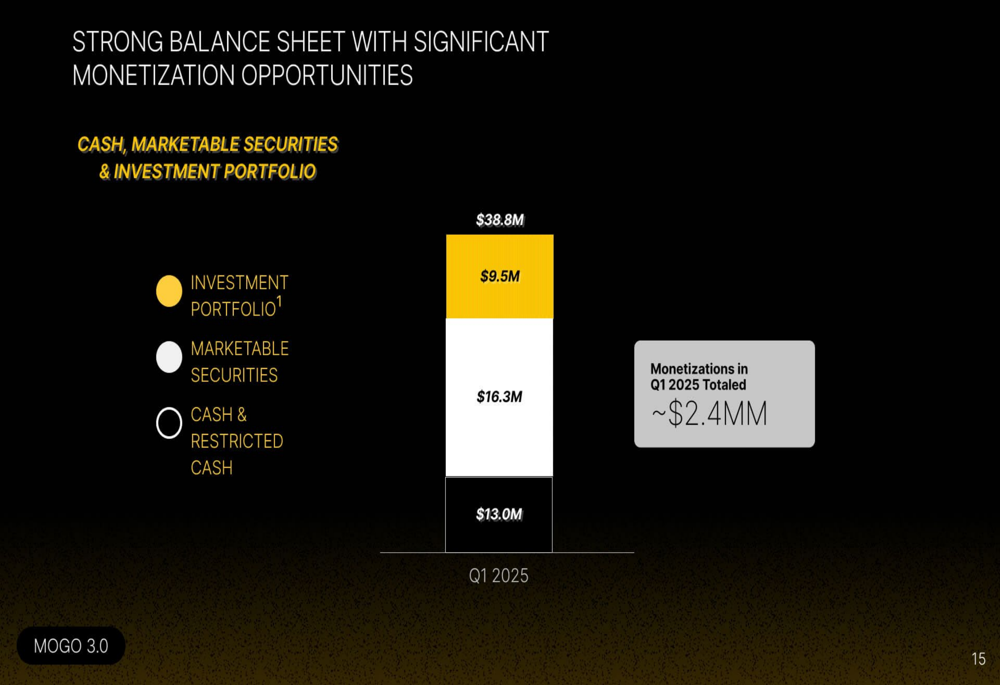
This financial position includes an investment portfolio valued at $9.5 million, marketable securities at $16.3 million, and cash & restricted cash at $13.0 million. The company also reported monetizing approximately $2.4 million from its investment portfolio during the quarter.
Forward-Looking Statements
For fiscal year 2025, Mogo provided a cautiously optimistic outlook. The company expects subscription and services revenue to grow at a mid-to-high single-digit rate, with wealth revenue projected to increase by 20-25% and the payments business growing in the mid-to-high teens.
However, Mogo anticipates that interest revenue from its lending business will decrease by approximately 8-10%, citing economic uncertainty. Overall, the company expects adjusted EBITDA to be in the range of $5 to $6 million for the full year.
The company’s strategic priorities for 2025 focus heavily on AI integration:
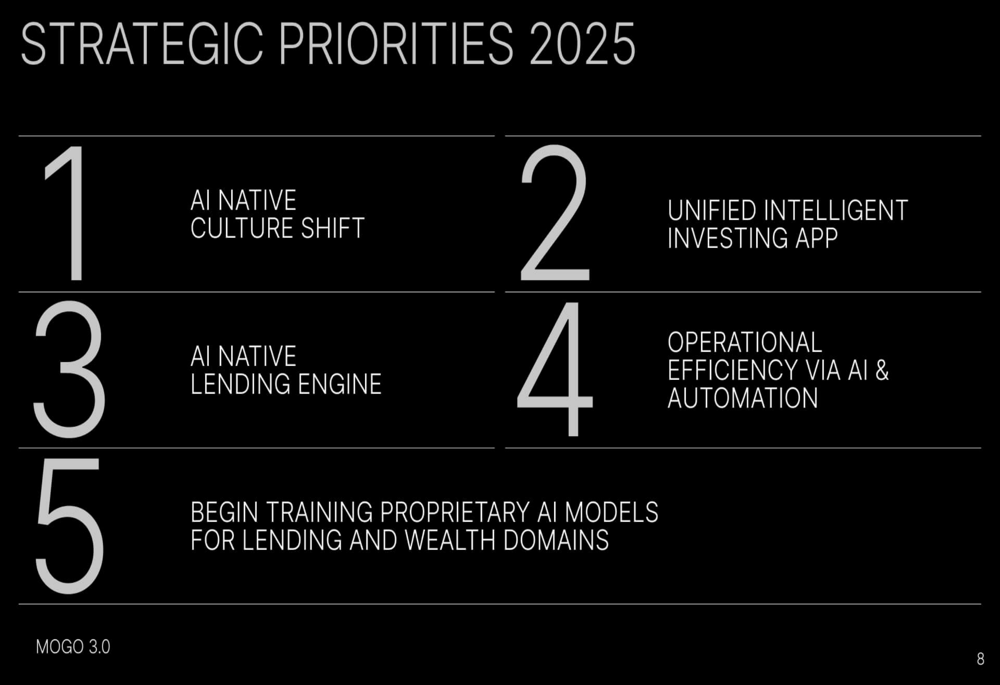
These priorities emphasize Mogo’s commitment to transforming into an AI-native financial platform, with specific focus on unified intelligent investing, AI-powered lending, operational efficiency, and developing proprietary AI models.
Mogo’s stock closed at $1.07 on May 8, down 3.18% for the day, reflecting broader market fluctuations rather than a direct response to the earnings report. According to the earnings call transcript, CEO Dave Feller emphasized the company’s long-term vision, stating, "We’re not chasing hype, we’re playing the long game and building for durable value."
As Mogo continues its transformation into an AI-native financial platform, investors will be watching closely to see if this strategic pivot can accelerate growth across all segments and improve bottom-line results in the coming quarters.
Full presentation:
This article was generated with the support of AI and reviewed by an editor. For more information see our T&C.
